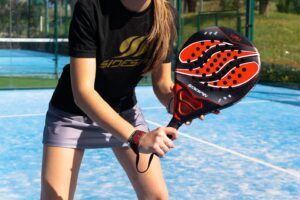The Science behind the Shape of Padel Paddles
2 min read
The Science behind the Shape of Padel Paddles
If you’re a fan of padel, then understanding the science behind the shape of padel paddles is absolutely essential to your game. A padel paddle is the most important piece of equipment that you’ll ever buy as it has a direct impact on your performance. Whether you’re a beginner or an advanced player, knowing what to look for in a paddle and how it works will help you make the right decision when buying a new one.
What Makes A Padel Paddle?
A padel paddle is a unique racket that is made up of three main components; the grip, the frame, and the face. The grip is made of foam or rubber and is where you hold onto the paddle. The frame is the skeleton of the paddle and holds everything together, and the face is the surface area that comes in contact with the ball.
The Sweet Spot
The sweet spot is the part of the paddle that is the most important when it comes to performance. It is the point on the face where you get the most power and accuracy upon contact with the ball. The size of the sweet spot varies depending on the paddle and has a direct influence on your performance. Paddles with larger sweet spots are often better for beginners as they are more forgiving, while smaller sweet spots are better suited for advanced players who are looking for more control.
The Shape of the Paddle
The shape of the paddle is critical when it comes to performance as it influences the sweet spot and the overall maneuverability of the paddle. Oval or teardrop-shaped paddles are generally better for beginners as they offer a larger sweet spot, while diamond or round-shaped paddles are more suited for advanced players who are looking for more control and maneuverability.
The Surface Material
The surface material of the paddle is also crucial when it comes to performance. Paddles can be made from a range of materials including graphite, carbon fiber, and even wood. The surface of the paddle can be smooth or textured, and this can affect the spin of the ball. For example, a rough surface can create more spin on the ball, which can be beneficial for advanced players, while a smooth surface is better for beginners.
The Bottom Line
In conclusion, choosing the right padel paddle comes down to your level of skill and personal preference. Whether you’re a beginner or an advanced player, understanding the science behind the shape of padel paddles is essential when it comes to your performance. So, make sure to do your research and choose a paddle that’s right for you, and remember to always look for a paddle with a sweet spot that fits your level of skill and personal preference. Happy playing!







